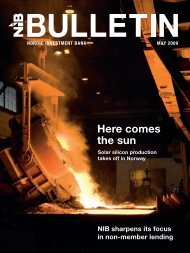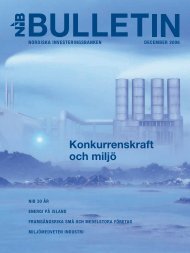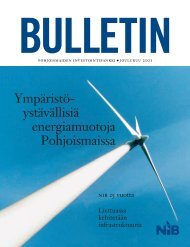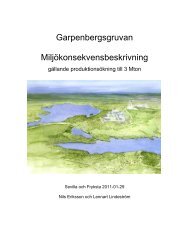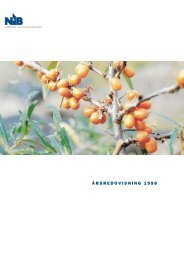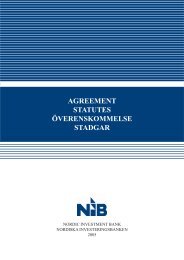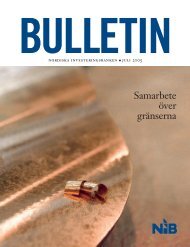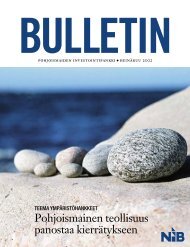BULLETIN
English - Nordic Investment Bank
English - Nordic Investment Bank
- No tags were found...
Create successful ePaper yourself
Turn your PDF publications into a flip-book with our unique Google optimized e-Paper software.
theme: ENVIRONMENTAL PROJECTS<br />
FACTS ABOUT<br />
NORSKE SKOG<br />
Norske Skog<br />
The wood-processing group<br />
Norske Skog is the world’s secondlargest<br />
producer of publication<br />
paper. In 1990 the group’s mills<br />
were located exclusively within Norway’s<br />
borders. Today Norske Skog<br />
produces paper in fifteen countries<br />
on five continents. “We see ourselves<br />
as the most global company<br />
in the branch,” states Jarle Langfjaeran,<br />
who is responsible for<br />
Norske Skog’s investor relations.<br />
Growth has occurred through<br />
acquisitions. The latest, and<br />
largest, was the acquisition of the<br />
New Zealand company Fletcher<br />
Challenge Paper in 2000. It was the<br />
largest acquisition yet made by a<br />
Norwegian company.<br />
NIB has had longstanding, good<br />
cooperation with Norske Skog and<br />
its Norwegian merger partners.<br />
Since the end of the 1970s the<br />
Bank has paid out twelve loans, the<br />
latest of which provides financing<br />
for a recycled fibre plant at the<br />
paper mill in Skogn, Norway. The<br />
plant has the capacity to process<br />
170 000 tonnes of waste paper<br />
annually, which is 70 per cent of<br />
the volume of recyclable paper in<br />
Norway.<br />
▲<br />
Norske Skog’s international expansion has occurred rapidly. The mills shown here are<br />
located in Norway, top, Tasmania, above left, and Italy, above right.<br />
have many small forest owners and it is<br />
thereby such a specific situation that the<br />
FSC system isn’t appropriate,” he explains.<br />
The Norwegian certification system is<br />
called “Living Forest”. It was developed at<br />
the end of the 1990s in cooperation among<br />
the paper industry, forest owners, state<br />
authorities and certain environmental organisations.<br />
The work to reconcile these two systems<br />
continues today.<br />
IN NORSKE SKOG’S environmental policy<br />
it is stated that firms shall prioritise forests<br />
that are certified.<br />
Does this apply also if it is more expensive?<br />
“Yes, we have paid a bit more for certified<br />
timber,” Rune Andersen answers. “But today<br />
it is no longer a relevant issue in Norway,<br />
since all the timber we buy comes from<br />
certified forests.”<br />
The criteria for certification are described<br />
in greater detail in Norske Skog’s<br />
environmental report for 2001. The criteria<br />
include, among other things, measures<br />
to conserve and restore a forest’s biological<br />
diversity; safeguard the health and vitality<br />
of its ecosystem; develop its economic<br />
resources; and promote the forest’s social<br />
functions.<br />
In order to ensure that the forestry is<br />
managed in a serious way, inspectors from<br />
Norske Skog travel around and check the<br />
forests that supply timber to all of the<br />
10 bulletin ● july 2002



